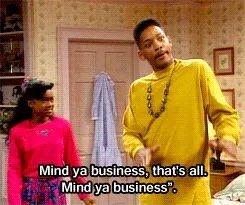
How to Design Your Business to Be "Recession Proof""
The businesses that break in economic downturn don't collapse because bad markets. They break from internal dysfunction. Here's how to design to a resilient business.

Why This Conversation Matters
Every founder’s feed right now is flooded with “recession-proof” advice:
“Cut costs.”
“Lower prices, no one has expendable income.”
“Just focus on passive income with digital products.”
“Hustle harder.”
And the one of the worst take of all: “It’s not your business, it’s just the economy.”
And I get it. Uncertainty is super uncomfortable. The instinct to pull yourself up by your bootstraps and "survive" is so American.
But here’s what years of working with service-based, women-owned brands (combined with data from Gartner, Bain, Deloitte, and PwC) have shown me:
The businesses that break in downturns don’t break from bad markets.
They break from internal chaos.
The Data Doesn’t Lie

Research from Gartner tracking B2B spending patterns shows something fascinating:
Businesses don't stop investing during downturns. They just get more strategic about WHERE they invest.
Efficiency tools? They still getting budget.
Operational optimization? Still a priority.
Vanity metrics and 'nice to haves'? Now, those get cut.
Similarly, Bain & Company’s analysis of the luxury sector highlights a “flight to quality” effect: consumers consolidate spending with premium brands they trust while cutting mid-tier, copy-paste options.
This isn't theory. It's pattern recognition from thousands of businesses across multiple economic cycles.
So the question isn't: 'How do I make my business recession-proof?'
It's: 'How do I design my business to be resilient regardless of market conditions?'
Let me show you...
Honest Assessment of the Economy
The economy isn’t universally “bad.” It’s selective.
Here's what's actually happening:
Spending hasn’t stopped—it’s consolidating.
According to research from the Bureau of Economic Analysis and McKinsey, consumers are cutting the mediocre, not the meaningful. Premium services that deliver real value are still thriving.
It’s the “nice-to-have” and “undifferentiated” offers that are struggling.The lipstick effect is alive and well.
Originally identified by Leonard Lauder, this phenomenon shows that during uncertainty, people still spend on small luxuries that make them feel good.They’re just more discerning about who they buy from. Brand trust + perceived value matters more price alone.ROI consciousness is the new currency.
PwC and Bain report that buyers are more strategic: every dollar must justify itself. Emotional impulse buys are down, but strategic investments are stable.Businesses are shifting from expansion to efficiency.
Gartner and Deloitte’s CFO Signals surveys show B2B service spending remains critical.
Growth budgets are shrinking but “profitability optimization” budgets are expanding.
Why ‘Recession-Proof’ Content Misses the Mark
The problem with most recession-proof content?
It’s built on scarcity, not strategy.
You’ve seen it:
“Clients don’t have money.” (Some do. Some don’t. They’re just more selective.)
“Lower your prices.” (A race to the bottom is still a race.)
“Add multiple income streams.” (More chaos doesn't guarantee more revenue, but you will spread yourself thin.)
This is reactive behavior, all built from fear instead of foresight.
Most of the businesses struggling right now were already struggling.
They just had enough revenue to hide their inefficiencies.
The market tightening didn’t create their problems, it only exposed them.
What Actually Breaks Businesses in Uncertainty

When service-based founders “fail” during economic shifts, it’s usually not about demand, it’s about dysfunction.
Let’s call it what it is:
1. Invisible Profitability
They’re making money, but don’t know their numbers. So when cash tightens, they can’t tell what to cut vs. what to protect.
No data causes you to seek advice not tailored to your business and make panic decisions.
2. Operational Inefficiency
Everything requires founder inputs or reinventing the wheel because there are no established SOPs resulting in time and money being wasted.
No intelligent systems makes scaling feels like you're constantly drowning in admin and backend tasks.
Inconsistent Client Experience
3. Inconsistent Client Experience
Quality service depends on the founder’s mood and energy. When stress spikes, service quality is first to drop.
Clients can feel instability resulting in lower retention rates, reinforcing even more stress.
4. Founder Dysregulation
Constant firefighting leaving no room for strategic planning. Reactive decisions are then made disguised as “figuring it out.”
Sound familiar?
These aren't "recession" problems. These are operational issues.
What Resilience Actually Looks Like
A resilient business isn’t invincible. It’s intelligent. It adapts effortlessly because it’s designed to.
1. Visibility — Data Intelligence
Knows exactly which services and clients drive profit.
Makes informed decisions, not emotional ones.
Sees patterns early enough to pivot calmly.
2. Efficiency — Operational Precision
Systems think for the founder.
Delivery is documented, replicable, and elevated.
Money doesn’t leak through inefficiency.
3. Consistency — Branded Experience
Quality doesn’t fluctuate with the founder’s stress levels.
Every touchpoint reinforces trust.
Retention stays high because reliability feels like luxury.
4. Composure — Regulated Growth
The founder leads from clarity, not cortisol.
Strategic thinking replaces survival mode.
Calm becomes your business advantage.
Recession-proofing is reactive. Whereas resilient operations is genius-level proactivity.
One hopes to survive. While the other is built to thrive, regardless.
If Your Operations Are Chaotic…
Clients feel it.
Premium pricing becomes hard to justify.
You end up competing on price, not quality.
If Your Operations Are Resilient…
Client experience becomes a signature.
Value is undeniable and defensible.
You become the brand people consolidate their spending with.
How to Design a Resilient Business

You don’t need more hustle. You just need to mind your business, aka establish the harmony between your nervous system and your business systems.
This isn’t regurgitated “survival tactics.”
I call it Regulated Growth where your business scales sustainably, intelligently and in sync with your capacity to lead.
Step 1: Regulate Your Nervous System
Your business can’t grow if you’re not at your best.
You create capacity through rest and pleasure, not through performance.
Action Item:
Rest. Play. Touch grass. Enjoy life beyond proving your worth through productivity.
Establish a grounding ritual aka your personal set of go-to actions that make you feel good and centered. Whether it’s journaling, walking, dancing, or doing absolutely nothing, train your nervous system to lead from calm, not urgency.
Step 2: Systematize Core Operations
To start, document your business processes, from inquiry to delivery to review request.
Your systems should think for you, not depend on you. Use AI or hire support; just stop being the bottleneck.
Action Item:
Open a blank Notion or Google Doc and map your entire business operations.
List every recurring task, then mark what can be automated, delegated, or eliminated.
Commit to automating or delegating at least one process per week until your business runs without constant input from you.
Step 3: Optimize Client Experience
Map out your client journey. What are the touchpoints that define their experience?
Automate what can be streamlined, and elevate what must stay human.
Action Item:
Do you have branded feedback loops (intentional, on-brand ways to request reviews) that turn retention into your quiet marketing engine?
Send a 2-minute survey to your last five clients asking:
“What part of working with me felt easiest?”
“What part felt confusing or inconsistent?”
Use those answers to refine your systems and identify where automation can enhance (not replace) the personal touch.
Then, set up one automated check-in or thank-you message that extends the relationship after delivery.
Step 4: Build Profitability Visibility
You can’t make strategic decisions from vibes. Start looking at your numbers and diving deep like the little Inspector Gadget you are. Know your profit margins, service costs, and client ROI so your strategy is rooted in data.
Action Item:
Establish a data analysis ritual.
Pick a weekly or monthly rhythm to collect, review, and analyze your business data for insights across operations, marketing, and sales.
Track what’s profitable, what’s draining, and what’s due for optimization then make one data-informed decision each cycle.
The Businesses That Come Out Stronger
Businesses that thrive during uncertainty use this time to build what they didn't have time to build during growth phases.
When business is booming, inefficiency can hide behind revenue. The more money you're making, revenue growth can become a mask. You may think “Everything’s fine, look at all this money i'm making!”
But when markets tighten? The truth shows up fast.
Those who use this time to uncertainty as a mirror (to dive deeper in rather than panic) come out with sharper operations, stronger client trust, and data that drives real strategy.
Use this season to build:
Intelligent systems that scale with you.
Data literacy that guides your next move.
Training materials and SOPs that prepare you for expansion.
Teams that create more capacity, not dysfunction.
So when the market shifts again (and it will), you’ll be positioned to receive even more profits while everyone else is still recovering.
Build From Resilience, Not Fear
"Recession-proofing" is reactive position to take. Don't be that girl.
Ambitious girlies design resilient businesses that puts them ahead of everyone else, in their own lane.
Which one are you?

If this resonated and you’re ready to see how intelligent systems can make your business more resilient, let's chat about your business and brand goals. I'll identify your friction points and map your custom path to calm, profitable growth.


